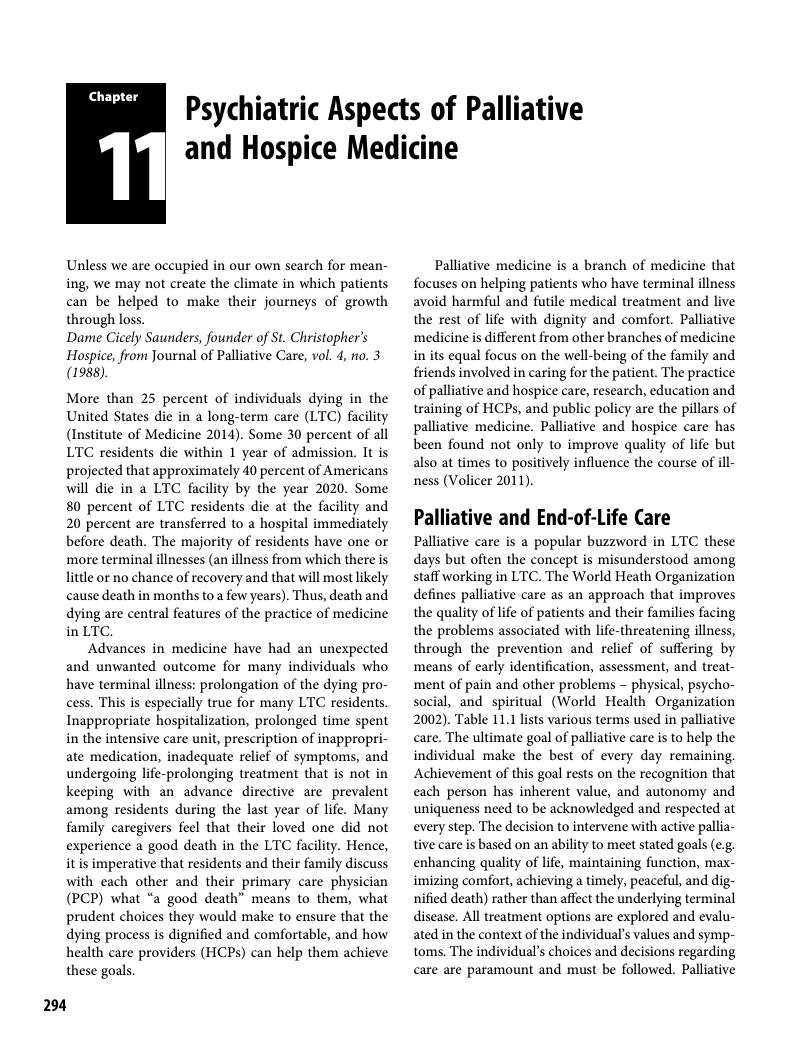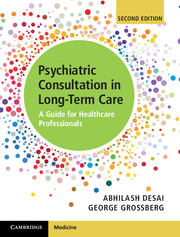Book contents
- Psychiatric Consultation in Long-Term Care
- Psychiatric Consultation in Long-Term Care
- Copyright page
- Contents
- Preface
- Abbreviations
- Commonly Used Psychotropic Drugs
- Section I Comprehensive Mental Health Services
- Section II Common Psychiatric Disorders in Long-Term Care
- Section III Issues in Long-Term Care Psychiatry
- Chapter 9 Nutritional Medicine and Long-Term Care Psychiatry
- Chapter 10 Resident Abuse and Ethical Issues in Long-Term Care
- Chapter 11 Psychiatric Aspects of Palliative and Hospice Medicine
- Chapter 12 Psychiatric Aspects of Rational Deprescribing
- Section IV Toward a Person-Centered Long-Term Care Community
- Index
- References
Chapter 11 - Psychiatric Aspects of Palliative and Hospice Medicine
from Section III - Issues in Long-Term Care Psychiatry
Published online by Cambridge University Press: 30 August 2017
- Psychiatric Consultation in Long-Term Care
- Psychiatric Consultation in Long-Term Care
- Copyright page
- Contents
- Preface
- Abbreviations
- Commonly Used Psychotropic Drugs
- Section I Comprehensive Mental Health Services
- Section II Common Psychiatric Disorders in Long-Term Care
- Section III Issues in Long-Term Care Psychiatry
- Chapter 9 Nutritional Medicine and Long-Term Care Psychiatry
- Chapter 10 Resident Abuse and Ethical Issues in Long-Term Care
- Chapter 11 Psychiatric Aspects of Palliative and Hospice Medicine
- Chapter 12 Psychiatric Aspects of Rational Deprescribing
- Section IV Toward a Person-Centered Long-Term Care Community
- Index
- References
Summary

- Type
- Chapter
- Information
- Psychiatric Consultation in Long-Term CareA Guide for Healthcare Professionals, pp. 294 - 329Publisher: Cambridge University PressPrint publication year: 2017



